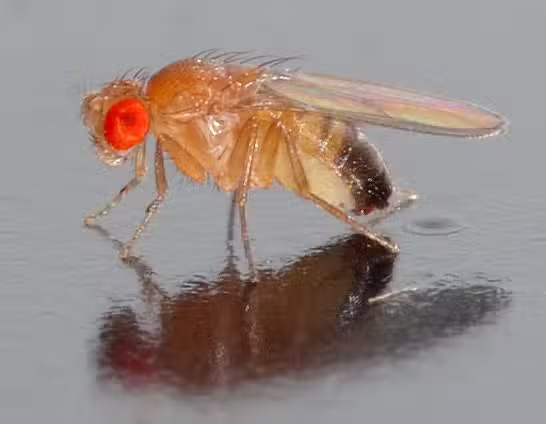Fruit Flies and Cocaine: Unlikely Allies in Addiction Research

Genetically modified fruit flies can develop a dependence on cocaine in just 16 hours—a breakthrough that could transform how we study and treat substance addiction.
In a surprising twist for addiction research, a team at the University of Utah has genetically engineered fruit flies that can become addicted to cocaine. The study, led by Dr. Adrian Rothenfluh from the Department of Psychiatry, was recently published in the Journal of Neuroscience, and it may fundamentally change how scientists investigate addiction.
A New Way to Study Drug Dependence
Drosophila melanogaster, better known as the fruit fly, shares about 75% of the genes linked to human diseases, making it an ideal model for biological research. But until now, studying drug addiction in fruit flies faced one major obstacle: they hated cocaine.
When offered a choice between sugary water and sugar water mixed with cocaine, the flies consistently avoided the drug-laced option. The reason? Bitter taste receptors on their feet alerted them to the presence of a toxic substance.
“The aversion is due to taste receptors located on the tarsi—the bottom of the fly’s legs—which they dip into liquids before ingestion,” the study explains. Flies have evolved to steer clear of plant-based toxins, and since cocaine comes from the coca plant, they instinctively avoid it.
Genetic Tweaks Changed Everything
The breakthrough came through genetic engineering. Researchers used advanced gene-silencing techniques to deactivate the bitter taste receptors. With this aversion switched off, something remarkable happened: within just 16 hours, the flies began to prefer the cocaine-laced water.
As Rothenfluh noted, “At low doses, the flies get hyperactive—just like people. At high doses, they become immobilized, which is also seen in humans.” The flies’ reactions mirrored human behavioral patterns when exposed to the drug.

Speeding Up Addiction Research
One of the most exciting aspects of this model is the speed of research it allows. Fruit flies complete their life cycle in about two weeks, compared to the months needed to breed genetically modified rodents. This enables scientists to test hundreds of genes in a fraction of the time.
The team believes this model could accelerate the discovery of the molecular mechanisms driving cocaine addiction and support the development of targeted therapies. Previous studies involving alcohol and fruit flies have already shown that many of the genes influencing drug responses in flies are also involved in human substance use disorders.
Why Fruit Flies Matter More Than You Think
This research adds to a growing body of evidence showing how similar fruit flies are to humans at the molecular and behavioral levels. Some recent studies have even proposed that insects like fruit flies may possess a form of consciousness.
Rothenfluh emphasized, “Once again, the so-called ‘humble’ fruit fly proves to be a powerful model for understanding the genetics and biology of human diseases.” These modified flies may become crucial tools for screening anti-addiction drugs and exploring the genetic factors that increase susceptibility to substance abuse.
A New Chapter in Addiction Research
This is only the beginning. Researchers aim to use this model to investigate more complex aspects of addiction, such as tolerance, withdrawal, and relapse. Thanks to their short generation time and low maintenance costs, fruit flies could dramatically accelerate the search for effective treatments for cocaine use disorder—a condition with no approved pharmacological therapies today.
Nature often surprises us. Who would have guessed that disabling a fly’s ability to taste bitterness could open a new path in the fight against one of the most devastating addictions? Yet these tiny insects may hold the key to unlocking treatments that could change millions of lives.
Read the original article on: Futuro Prossimo
Read more: TEWL: A Promising Predictor for Diabetic Foot Ulcer Recurrence











Leave a Reply